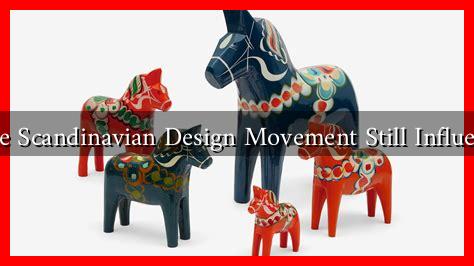-
Table of Contents
- Is the Scandinavian Design Movement Still Influential?
- The Core Principles of Scandinavian Design
- Historical Context and Evolution
- Contemporary Influence of Scandinavian Design
- Scandinavian Design in the Digital Age
- Global Reach and Cultural Impact
- Conclusion: The Enduring Legacy of Scandinavian Design
Is the Scandinavian Design Movement Still Influential?
The Scandinavian design movement, characterized by its minimalism, functionality, and connection to nature, has left an indelible mark on the world of design. Emerging in the mid-20th century, it has evolved over the decades, but the question remains: is it still influential today? This article explores the enduring legacy of Scandinavian design, its principles, and its relevance in contemporary design practices.
The Core Principles of Scandinavian Design
Scandinavian design is rooted in several key principles that continue to resonate in modern design. These principles include:
- Minimalism: Emphasizing simplicity and clean lines, Scandinavian design avoids unnecessary ornamentation.
- Functionality: Every piece of furniture or object is designed with a purpose, ensuring practicality without sacrificing aesthetics.
- Natural Materials: The use of wood, leather, and textiles reflects a connection to nature, promoting sustainability.
- Light and Space: Designs often incorporate natural light and open spaces, creating a sense of tranquility.
Historical Context and Evolution
The Scandinavian design movement gained prominence in the 1950s, with designers like Hans Wegner, Arne Jacobsen, and Alvar Aalto leading the charge. Their work was not only functional but also celebrated craftsmanship and the beauty of natural materials. The movement was a response to the post-war era, focusing on creating affordable yet stylish furniture for the masses.
As the years progressed, Scandinavian design continued to evolve, adapting to changing societal needs and technological advancements. The rise of digital design and the increasing importance of sustainability have further shaped its trajectory.
Contemporary Influence of Scandinavian Design
Today, Scandinavian design remains influential across various sectors, including architecture, interior design, and product design. Its principles are evident in numerous contemporary brands and designers. Some notable examples include:
- IKEA: The Swedish furniture giant embodies Scandinavian design principles, offering affordable, functional, and stylish products that appeal to a global audience.
- Muuto: This Danish design company focuses on modern interpretations of classic Scandinavian design, emphasizing innovation and sustainability.
- HAY: Known for its contemporary furniture and accessories, HAY combines traditional craftsmanship with modern aesthetics.
Scandinavian Design in the Digital Age
The digital age has transformed how design is perceived and executed. Scandinavian design has adapted to this shift, with many designers leveraging technology to create innovative solutions. For instance, the rise of 3D printing has allowed for more intricate designs while maintaining the core principles of functionality and minimalism.
Moreover, the emphasis on sustainability has become more pronounced. Many contemporary designers are focusing on eco-friendly materials and production methods, aligning with the original ethos of Scandinavian design. Brands like Finnish Design Shop are leading the charge in promoting sustainable practices while offering timeless designs.
Global Reach and Cultural Impact
Scandinavian design has transcended its geographical origins, influencing global design trends. Its aesthetic can be seen in various cultures, from the minimalist interiors of Japanese homes to the functional yet stylish products emerging from American startups. The movement’s focus on simplicity and functionality resonates with a global audience seeking to declutter their lives and embrace a more sustainable lifestyle.
Conclusion: The Enduring Legacy of Scandinavian Design
In conclusion, the Scandinavian design movement remains a powerful influence in contemporary design. Its core principles of minimalism, functionality, and sustainability continue to resonate with designers and consumers alike. As we navigate the complexities of modern life, the timeless appeal of Scandinavian design offers a pathway to simplicity and beauty. Whether through iconic brands like IKEA or innovative startups, the legacy of Scandinavian design is not only alive but thriving in today’s world.
As we look to the future, it is clear that the principles of Scandinavian design will continue to shape our environments, encouraging us to create spaces that are not only aesthetically pleasing but also functional and sustainable.

